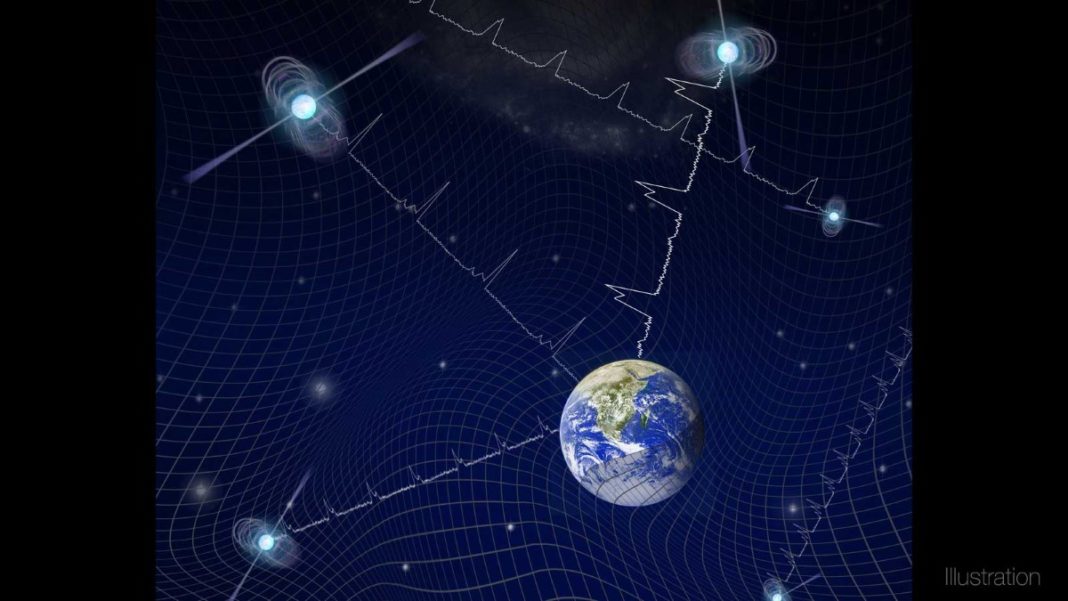INDIA: Using the upgraded Giant Meterwave Radio Telescope (uGMRT), a team of astronomers from India and Australia has conducted groundbreaking observations of the pulsar PSR J0026–1955, unveiling intriguing insights into its subpulse drifting and nulling behavior.
The results of this study, published on the preprint server arXiv, provide a deeper understanding of the complex phenomena exhibited by this fascinating celestial object. Pulsars, highly magnetized rotating neutron stars, emit beams of electromagnetic radiation.
While they are typically detected through short bursts of radio emission, they can also be observed across various other wavelengths, including optical, X-ray, and gamma-ray. The radio emission from pulsars displays a range of phenomena, including subpulse drifting, nulling, and mode changing.
Subpulse drifting refers to the radio emission’s apparent spin phase drift within the pulsar’s main pulse profile. Nulling, conversely, involves the abrupt cessation of emission for a few to hundreds of pulse periods before it resumes.
PSR J0026-1955, a Galactic pulsar discovered in 2018, possesses a spin period of around 1.306 seconds and a dispersion measure of 20.81 pc/cm3.
With a spin-down luminosity of 23 nonillion erg/s and a surface magnetic field strength of 770 billion Gauss, it boasts an estimated characteristic age of 47 million years.
Building upon previous observations using the Murchison Widefield Array (MWA), the team, led by Parul Janagal from the Indian Institute of Technology Indore, decided to delve deeper into the subpulse drifting and nulling exhibited by PSR J0026–1955.
The team’s detailed investigation, conducted using the upgraded Giant Metrewave Radio Telescope (uGMRT) at frequencies ranging from 300 to 500 MHz, uncovered fascinating insights into the pulsar’s behaviour.
The observations revealed that PSR J0026-1955 experiences both evolutionary and non-evolutionary drift rates, with two distinct subpulse drifting modes, designated A and B. Mode A was further divided into A0, A1, and A2 based on the evolutionary behaviour of the drift rate.
Additionally, the study found that PSR J0026-1955 exhibits short- and long-duration nulls, with a nulling fraction estimated to be around 58%. This fraction is significantly lower than that reported in previous MWA observations.
The researchers speculate that this discrepancy may arise due to differences in observation durations, a shallow spectral index component, or a frequency dependence of nulling. The observations also provided evidence of subpulse memory across nulls in PSR J0026-1955.
The researchers discovered instances of drift rate and subpulse phase continuity during nulls, suggesting the presence of stable discharge in the polar gap, which is not detectable due to the absence of a dominant coherence mechanism or a partially screened gap hindering the generation of observable radio emission.
Also Read: ISRO’s Chandrayaan-3 Begins Journey to the Moon, Political Parties Clash Over Credit



